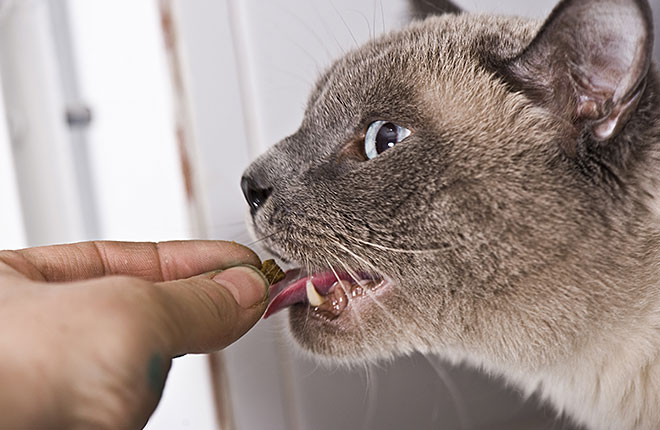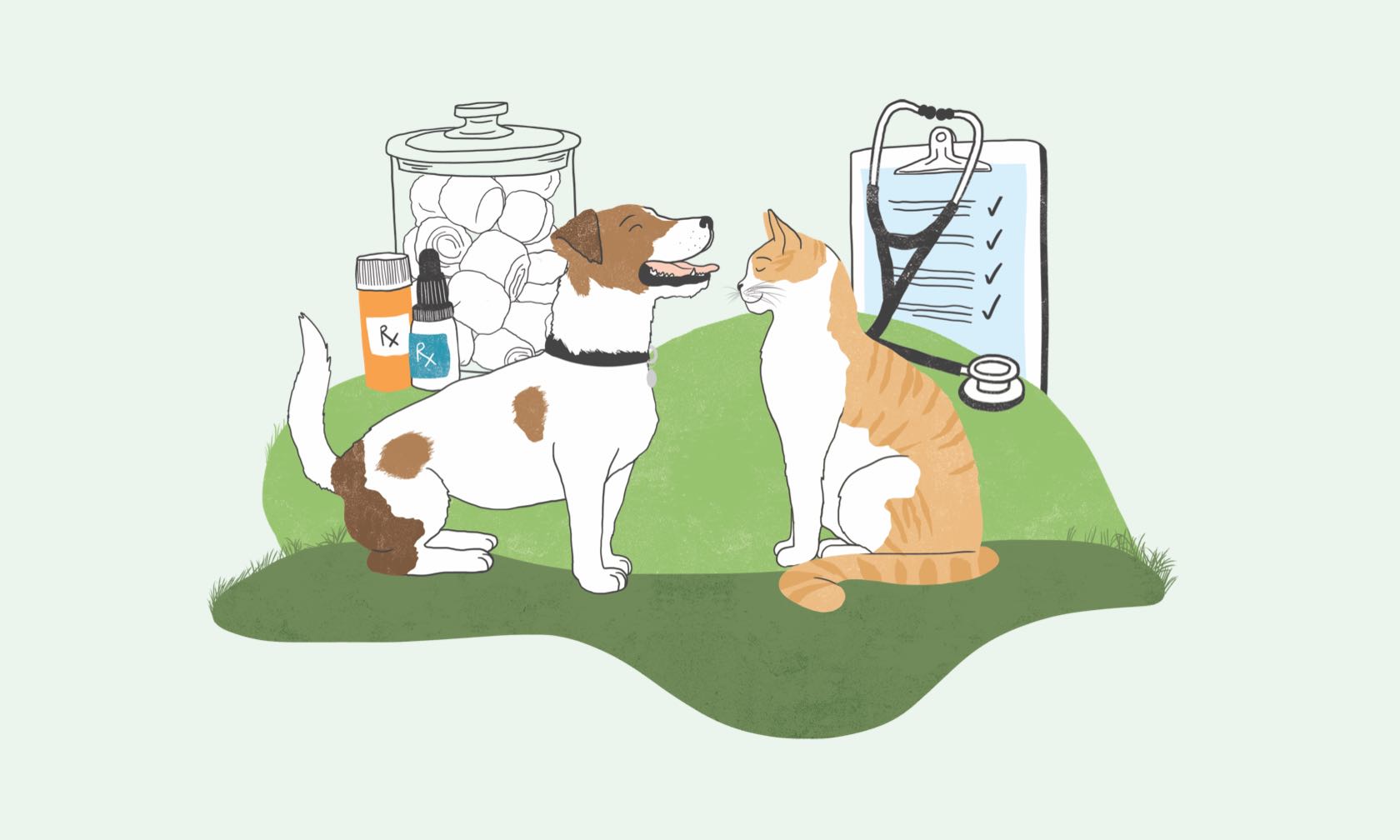Have you found yourself pleading with your veterinarian, saying “My dog won’t take pills”? If so, you’re not alone. Both dogs and cats are attracted to the smell and taste of many different things, but pill-flavored pet food often isn’t one of them. Other dogs and cats are willing to ignore the pill entirely if it’s masked in food. To counter these common challenges, here are some tips for giving pills to dogs and cats.
Follow the Directions
While some pet owners crush pills and mix them with their pet’s food, this should never be attempted without first asking your veterinarian. Some formulations rely on the pill or capsule to remain intact to be effective and safe, while other medications are not to be given with food at all. Crushing a pill may also leave a medicinal smell in the room or on your hands that especially sensitive pets will notice.

Opt for Pills with a Pet-friendly Taste
Many pills or tablets for pets now come in pet-friendly flavors, such as beef, chicken, or liver. Some pets will be more likely to take their medicine if they receive these tastier options.
Gradually Condition Those Who Escape
Treat or no treat, some dogs and cats are reluctant to take pills and will run away when the time comes. At the first rattle of a foil pack, a 90-lb Labrador Retriever may run away and hide in a space where even a cat couldn’t turn around. Then there’s the “safecracker,” who skillfully separates food from medicine and holds it for a minute before spitting it out. Pursuing or restraining a distressed pet will only escalate the problem, so don’t go down this route.
The ASPCA recommends gradual conditioning for highly resistant pets, where the ratio of good experiences to bad experiences is high, saying, “For every real pill you give him, he should receive a minimum of 20 ‘treat pills,‘[1]” although not all at one time.
End the Pilling Routine Once and for All
Giving pills to your pet can become a struggle and/or result in missed doses. Some medicines, such as antibiotics that treat bacterial infections, may not work as effectively if doses are given sporadically or incompletely.
The antidote to this challenge requires no food tricks, furniture moving, or undignified wrestling matches. Some veterinary medicines are formulated as chewable tablets, oral drops, or even injections (injections need to be administered in a clinic). This is especially helpful for administering antibiotics during a brief period of treatment.
In any case, always let your veterinarian know if you have serious difficulty pilling your dog or cat so that they can work with you to find the best alternative solution.
ZPC-00543R1
- American Society for the Prevention of Cruelty to Animals website. Give your dog a pill. http://www.aspca.org/pet-care/virtual-pet-behaviorist/dog-behavior/giving-your-dog-pill. Accessed November 5, 2018.



